Showing 11 to 20 of 272 results

City University of Hong Kong (CityUHK) has recently developed a new multi-principal element metallic glass that shatters previous limitations of tensile ductility. This novel glass is twice as ductile as traditional metallic glasses, and its strength nearly doubles when stretched. The key to this extraordinary property lies in the unique structural evolution of the glass during deformation, which causes it to harden rather than soften, making it significantly more resistant to sudden breakage under tension. The findings surpass limitations of tensile ductility in metallic glasses and provide a promising pathway to create strong and ductile glasses.

Van der Waals (vdW) dielectrics are widely used in nanoelectronics to preserve the intrinsic properties of two-dimensional (2D) semiconductors. However, achieving aligned growth of 2D semiconductors and their direct utilization on original vdWs epitaxial dielectrics to avoid disorders poses significant challenges. To overcome these challenges, researchers from the City University of Hong Kong (CityUHK) developed a hydromechanical strategy for aligned 2D material synthesis, pushing forward high-performance devices with as-grown 2D materials/vdWs dielectrics.

The synthesis of metallic inorganic compound thin films typically requires high-temperature processes, which hampers their applications on flexible substrates. Recently, a research team at City University of Hong Kong (CityUHK) developed a pulse irradiation technique that synthesizes a variety of thin films in an extremely short time under ultra-low temperature. The strategy effectively addresses the compatibility and cost issues of traditional high-temperature synthesis, and the prepared thermoelectric films exhibit excellent optoelectronic performance in the visible and near-infrared spectrum range, which is promising for wearable electronics and integrated optoelectronic circuits.
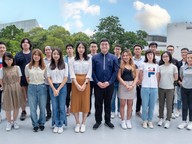
Thermochromic perovskite is a new color switch material used in energy-saving smart windows. Despite its potential for energy savings, thermochromic perovskite suffers from poor weather resistance, susceptibility to water damage, and high optical haze, limiting its practical application. To overcome these challenges, researchers from City University of Hong Kong (CityUHK) developed a breathable, weather-resistant, low-haze perovskite smart window inspired by medical masks, pushing forward the wide applications of smart windows in green buildings.
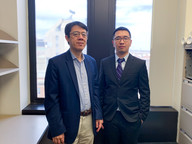
Understanding water behavior in nanopores is crucial for both science and practical applications. Scientists from City University of Hong Kong (CityU) have revealed the remarkable behavior of water and ice under high pressure and temperature , and strong confinement. These findings, which defy the normal behavior observed in daily life, hold immense potential for advancing our understanding of water's unusual properties in extreme environments, such as in the core of distant ice planets. The implications of this major scientific advancement span various fields, including planetary science, energy science, and nanofluidic engineering.
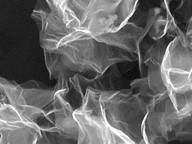
Zinc-nitrate batteries are a primary non-rechargeable energy storage system that utilizes the redox potential difference between zinc and nitrate ions to store and release electrical energy. A research team co-led by chemists from City University of Hong Kong (CityU) have developed a high-performance rechargeable zinc-nitrate/ethanol battery by introducing an innovative catalyst. They successfully designed and synthesized an efficient tetraphenylporphyrin (tpp) modified heterophase rhodium-copper alloy metallene (RhCu M-tpp). This bifunctional catalyst exhibits remarkable capabilities in both the electrocatalytic nitrate reduction reaction (NO3RR) and ethanol oxidation reaction (EOR) in a neutral medium, overcoming the monofunctional limitations of traditional metal-based solid catalysts and providing a valuable reference for the design of sustainable energy storage in the future.
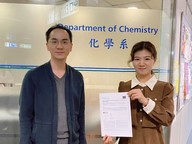
G-quadruplexes (G4), which are special structures in DNA and RNA that play a crucial role in cells, have been associated with cancers and neurological diseases. A research team from City University of Hong Kong (CityU) recently built a new platform to select L-RNA aptamers that can target functional G4 structures. They found an L-RNA aptamer called L-Apt12-6 that binds specifically to a specific topology of G4 structure: parallel G4. The findings may be beneficial for developing new drugs and treatments for G4-related diseases, like cancers.
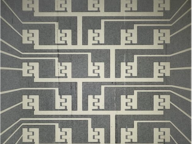
A research team from City University of Hong Kong (CityU) recently successfully achieved lattice-mismatch-free construction of III-V/chalcogenide core-shell heterostructure nanowires for electronic and optoelectronic applications. This breakthrough addresses crucial technological challenges related to the lattice mismatch problem in the growth of high-quality heterostructure semiconductors, leading to enhanced carrier transport and photoelectric properties.

Traumatic injuries to the peripheral nervous system are a leading cause of disability, especially patients with proximal peripheral nerve injury. It’s hard to regenerate and regain normal function in a short period, and it often leads to sensory and motor dysfunction, which greatly affects the patient’s quality of life. Recently, a research team led by City University of Hong Kong (CityU) neuroscientists found that metaxalone treatment accelerates nerve repair and function recovery comparable to immediate treatment, offering a highly relevant clinical strategy.

Downscaling of electronic devices, such as transistors, has reached a plateau, posing challenges for semiconductor fabrication. However, a research team led by materials scientists from City University of Hong Kong (CityU) recently discovered a new strategy for developing highly versatile electronics with outstanding performance, using transistors made of mixed-dimensional nanowires and nanoflakes. This innovation paves the way for simplified chip circuit design, offering versatility and low power dissipation in future electronics.
